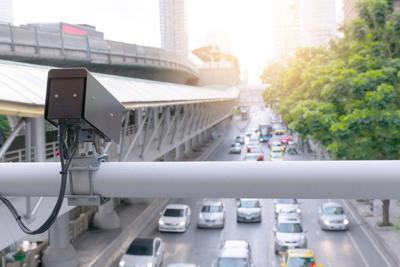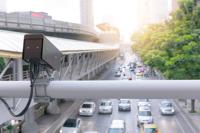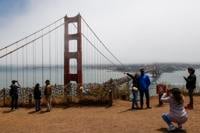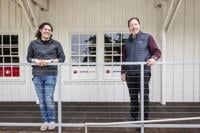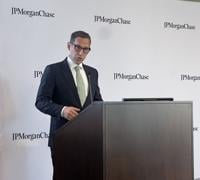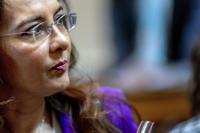Gov. Gavin Newsom signed Assembly Bill 645 into law last week, setting the stage for California cities to install speed-monitoring cameras that have drawn both fervent support and harsh criticism from officials and activists.
The bill, coauthored by state Sen. Scott Wiener, authorizes San Francisco to adopt a pilot program that will deploy more than 30 cameras to monitor and ticket drivers for speeding.
The cameras have been lauded by some activists and city officials as a key tool to deter dangerous driving, but human-rights groups have signaled their concern that the new law will disproportionately penalize communities of color.
The California State Senate passed AB 645 by a wide margin last month, and the law will go into effect in San Francisco in January.
The San Francisco Municipal Transportation Agency will start working to identify intersections where the cameras will be installed and inform the public before the speed-monitoring systems come online.
”I am thrilled that the governor signed Assembly Bill 645 to give us another critical tool to make our streets safer and save lives,” San Francisco Mayor London Breed said in a prepared statement. “Enforcement must be part of our work to make our streets safer, and speed cameras can be a key part of that work.”
AB 645 has been championed by city officials and activists as a potent countermeasure to growing traffic deaths and injuries on San Francisco streets. Similarly, the National Transportation Safety Board recommended states address legislative barriers that block speed safety programs amid findings that such programs can be effective in curbing dangerous driving behavior.
As part of the new law, drivers who are caught speeding will be issued warnings in the first 60 days of the program. Afterward, drivers will be fined for driving more than 11 mph over posted speed limits.
The penalty will increase from $50 to $100 for drivers going 16 to 25 mph over the speed limit, $200 for drivers going
26 to 99 mph over the speed limit and $500 for those exceeding posted limits
by 100 mph.
”Dangerous speeding hurts and kills people every day in California, and every possible action must be taken to prevent these senseless tragedies,” said Walk San Francisco Executive Director Jodie Medeiros following the bill’s passage. “Finally, cities like San Francisco can start using a proven tool to protect communities from deadly speeding.”
Medeiros and city officials, including District 6 Supervisor Matt Dorsey and Amanda Eaken, chair of the SFMTA Board of Directors, brought renewed attention to AB 645 in August after a 4-year-old girl and her father were struck by an SUV while walking in an intersection near Oracle Park.
Ex // Top Stories
Company, which offers software for managing solar and battery storage systems, saw its sales plunge and its loss swell last year
A downturn in international travel could be a drag on The City’s fledgling post-pandemic recovery
Companies have filled up almost all of the space available for lease in the national park on the former Presidio Army base
The girl was in a stroller that was being pushed by her parents in the intersection when they were hit by the vehicle. The girl and her father were taken to a hospital, where she died and her father was treated for injuries.
“This is a huge win for safe streets, and so many of us who have worked on this are celebrating today,” Medeiros said. “We are grateful that the governor saw the urgent need for this life saving solution.”
But not everyone agrees. Organizations such as Human Rights Watch and the American Civil Liberties Union have opposed AB 645, claiming the proposed surveillance infrastructure will disproportionately affect communities of color.
After AB 645 passed the state senate, the ACLU told The Examiner that the bill’s “surveil-and-fine approach” will likely cause disproportionate economic harm to the very communities it is intended to benefit.
The ACLU cited an analysis that found traffic cameras in Chicago issued citations to Black and Latino neighborhoods at twice the rate as households in majority white ZIP codes, and the organization predicted the same would happen in California. The organization subsequently called upon Newsom to veto AB 645.
Speed cameras will expand surveillance of already overpoliced communities of color without changing or decreasing existing methods of traffic enforcement, Human Rights Watch said in an open letter to state Sen. Anthony Portantino, who chairs the California Senate Appropriations Committee.
The organization added that the images captured “create a presumption of guilt,” which will make it difficult for wrongly cited drivers to contest alleged violations.
Breed’s office said AB 645 intends for speed-monitoring systems to only be implemented in areas such as near schools and in high-injury networks — areas where large numbers of pedestrians have been killed or severely injured in traffic crashes.
The bill itself proposes camera systems could be placed on “safety corridors,” which would be determined by taking into account collision data such as the number of traffic injuries and fatalities. But HRW wrote in its letter that disadvantaged communities are frequently located within such corridors.
A large number of dangerous intersections identified in San Francisco are located within and throughout the Tenderloin and Mission District areas, which have high Black and Latino populations.
Breed’s office acknowledged the serious potential for speed-monitoring systems to disproportionately penalize communities of color but said the pilot program “centers equity considerations” by including community stakeholder engagement requirements, ensuring the citation types and amounts are not “overly burdensome” for low-income drivers and adhering to a requirement to analyze the racial equity and financial impacts of the program.
”While traffic safety is a citywide issue, we know our low-income communities have been most impacted by dangerous driving and severe collisions,” Breed said. “Only a third of our city’s streets run through historically disadvantaged communities; however, streets in these neighborhoods are almost twice as likely to be on the High Injury Network where the overwhelming majority of serious injuries occur.”

